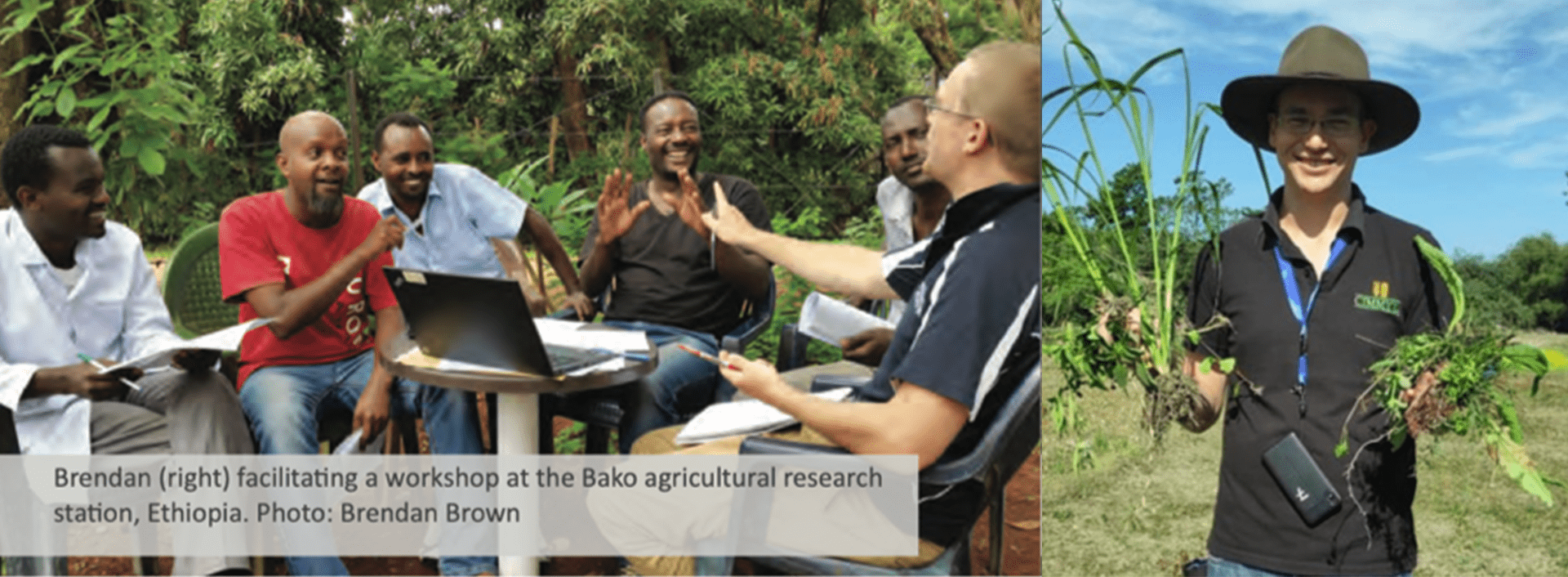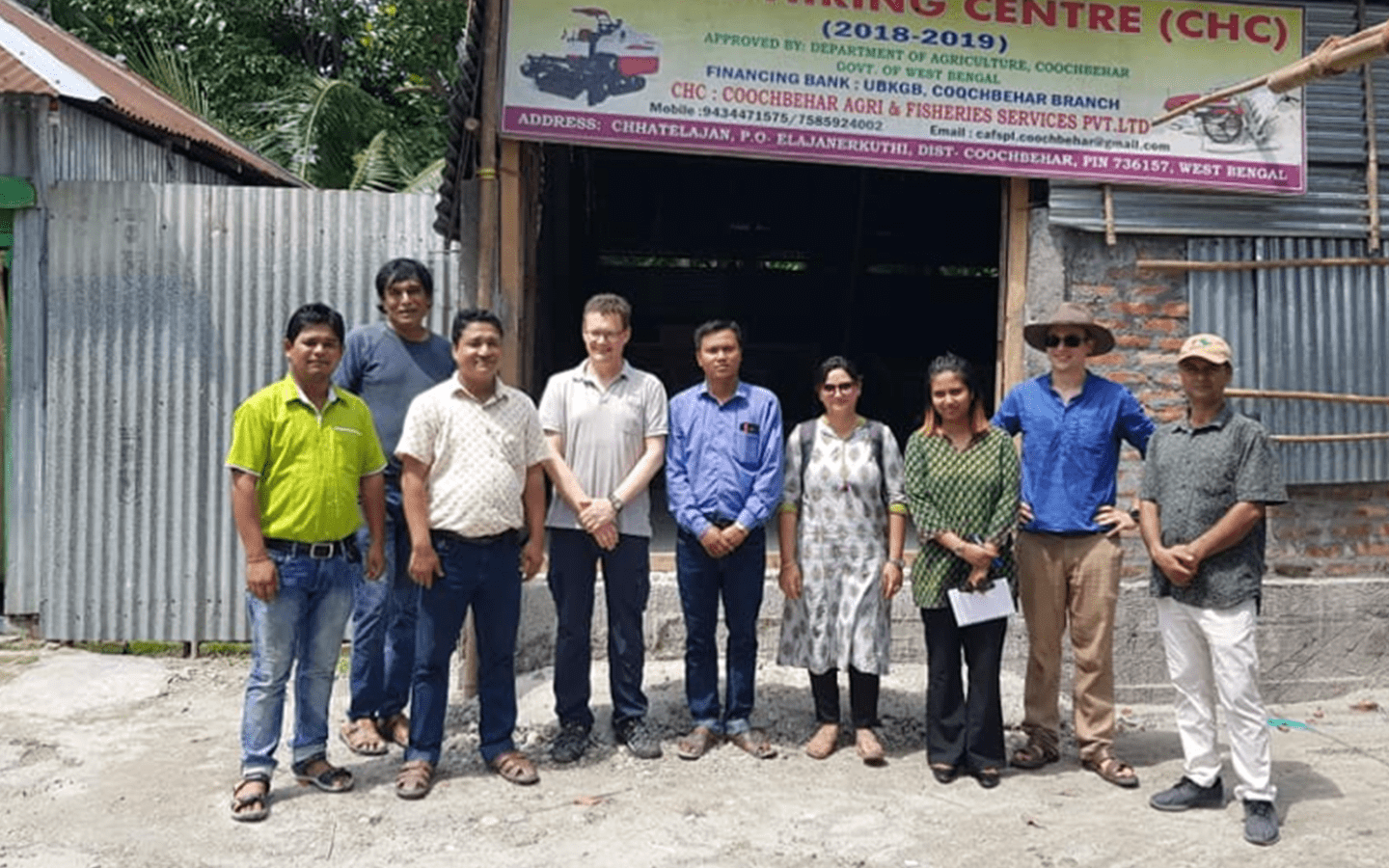

How to get your foot in the door of the CGIAR centres
February 12, 2020
Here is the latest in our series of NextGen blogs focused on highlighting opportunities and providing advice for young up-and-coming students, graduates and volunteers interested in exploring the amazing and rewarding world of international agricultural research and development!
If you have missed these concise and punchy features, you can catch-up below:
- Getting the #nextgen into international agricultural research for development by Nikki Dumbrell, PhD student, The University of Adelaide’s Centre for Global Food and Resources.
- Cultivating Confidence – say ‘yes’ by Dr Jane Alver, Associate Research Program Manager for Gender, Australian Centre for International Agricultural Research (ACIAR)
- What is it and how do I get involved: RAID’s guide into International Agricultural Research by Tamaya Peressini and Jack Hetherington, RAID
We came across Dr Brendan Brown as a PhD student at the School of Agriculture, Food and Wine, University of Adelaide when he was awarded a 2014 Crawford Fund conference scholarship. He is now an agricultural innovation scientist at the International Maize and Wheat Improvement Center (CIMMYT). In this blog he explains his career path from university student to working in a CGIAR centre, part of the world’s largest global agricultural innovation network, and he gives his tips and ideas for navigating the opportunities and challenges along the way.

_______________________________________________________________________________________
BB’s guide to getting your foot in the door to the CGIAR*
*based on nothing other than my own personal experiences…
Step 1: Build your networks
I was able to obtain both CSIRO and CIMMYT sponsorship for my PhD, through in part, the connections I made while working during the ACIAR Graduate Development Program. The people I met and got to know through various grad program activities like annual planning meetings provided a great platform to come back to and get advice on potential supervisors and funding. I’d highly recommend the ACIAR graduate program for both the experience gained and the networks developed. It provides an essential network for anyone thinking of going on with further studies or a career in international agricultural research. I know that my year at ACIAR certainly made me more employable as well!
Step 2: Develop a special skill
I have always thought of a PhD as ‘becoming an expert at something’, or creating a special skill. For me, that was participatory impact pathway development. This was actually a topic that came to me though a few years work experience with ACIAR and the FAO (through the AYAD Program). I realised there was a research gap that nobody was addressing that I found very interesting, and I wanted to fill that niche. I particularly focused (thanks to my supervisors) on creating novel theoretical frameworks rather than just academic findings, which helped to apply my work more widely. In the end, I came out with some fairly novel thinking and skills that could be applied both in a narrow technical sense and more broadly within the development sphere.
Step 3: Combine them together
This one is harder for people like me who are naturally introverted – cultivating those networks. Submit lots of abstracts and get to conferences – and talk to people. Get your academic social media in order – google scholar, LinkedIn, ResearchGate, etc. Make offers to come and present. Use every opportunity to get your name out there and be known. For me, I was backpacking across the Americas post PhD and while in Mexico, I offered to present my research at CIMMYT Headquarters in Mexico City. After presenting at CIMMYT, I was offered a position to extend my research in South Asia.
Now obviously, this is merely the ramblings and reflections of my personal experience, which won’t always apply or even be useful – but I would say that the steps are generically applicable, with one further point.

Step 4: Research and hunt
Without wishing to flood my inbox with many requests from people who have read this blog (unfortunately my current projects are all ending up), many projects have some scope for consultancies for those with useful and relevant skills. While the CGIAR websites usually have formally advertised and longer-term positions, consultancies can tend to be initiated based on needs identified by projects. So, find projects that you might have an academic interest in and think of the niche that you might fill with your ‘special skill’, and make a concise pitch to people on that project. Please note – generic spam emails will get you nowhere – know what your special skill is and think about how it fits with the project you have researched. Even if you strike out, getting your name out there might ring a bell when something else does come up within that project, organisation or otherwise.
Happy hunting.
BB




